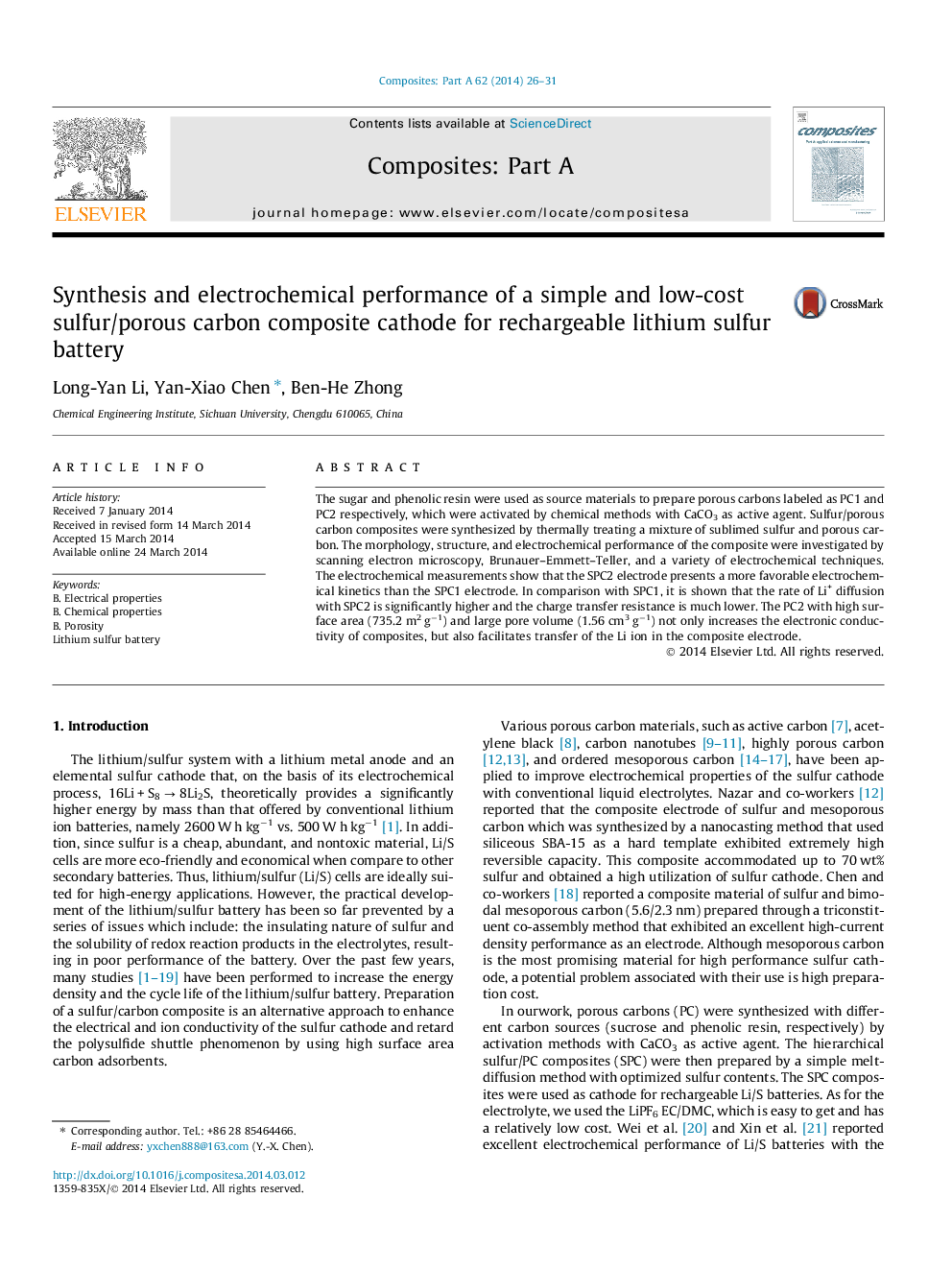| Article ID | Journal | Published Year | Pages | File Type |
|---|---|---|---|---|
| 1466044 | Composites Part A: Applied Science and Manufacturing | 2014 | 6 Pages |
The sugar and phenolic resin were used as source materials to prepare porous carbons labeled as PC1 and PC2 respectively, which were activated by chemical methods with CaCO3 as active agent. Sulfur/porous carbon composites were synthesized by thermally treating a mixture of sublimed sulfur and porous carbon. The morphology, structure, and electrochemical performance of the composite were investigated by scanning electron microscopy, Brunauer–Emmett–Teller, and a variety of electrochemical techniques. The electrochemical measurements show that the SPC2 electrode presents a more favorable electrochemical kinetics than the SPC1 electrode. In comparison with SPC1, it is shown that the rate of Li+ diffusion with SPC2 is significantly higher and the charge transfer resistance is much lower. The PC2 with high surface area (735.2 m2 g−1) and large pore volume (1.56 cm3 g−1) not only increases the electronic conductivity of composites, but also facilitates transfer of the Li ion in the composite electrode.
